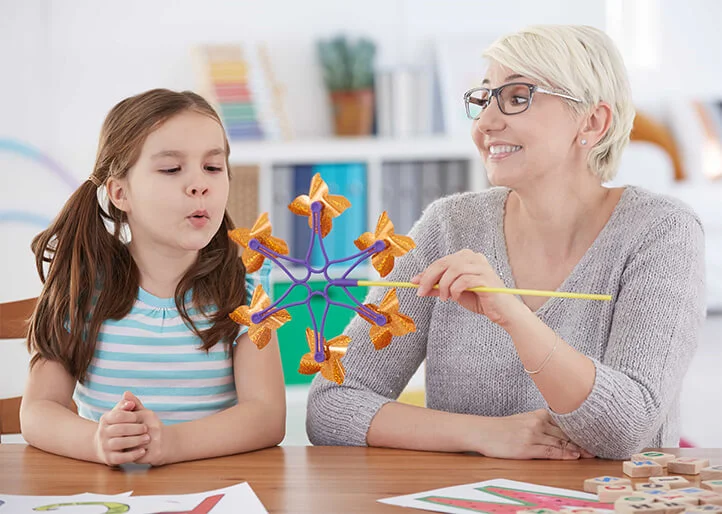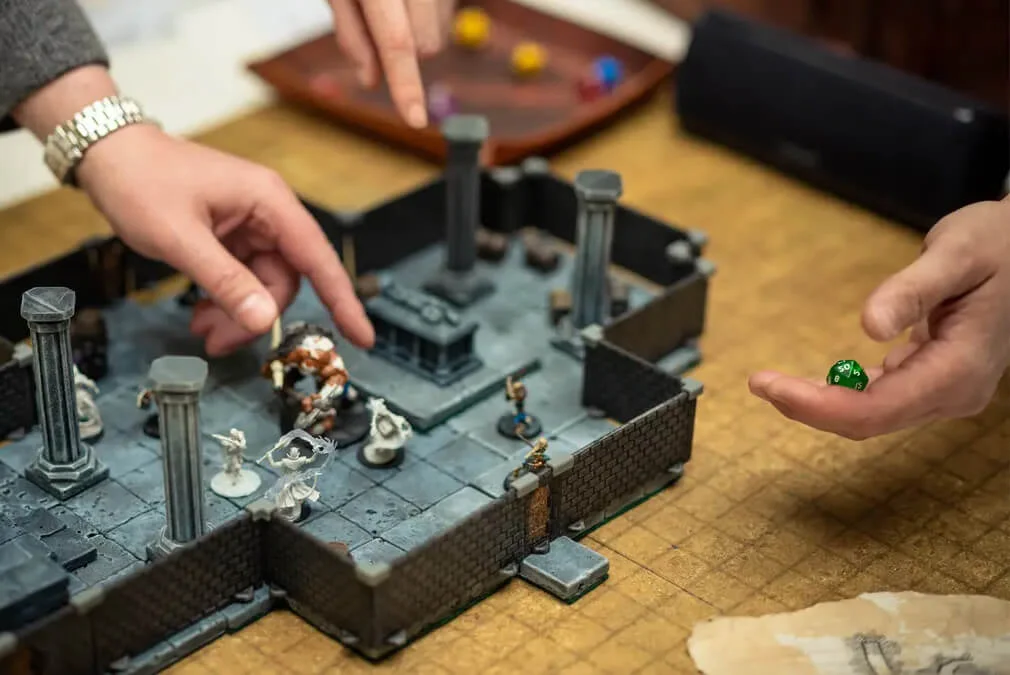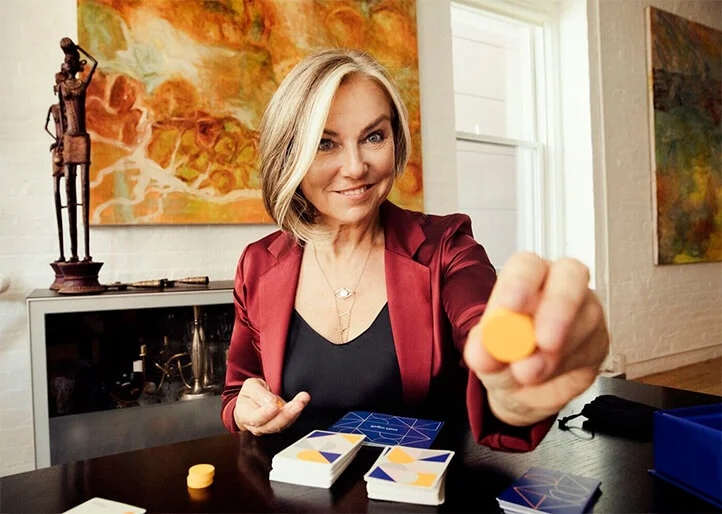Play therapy is a form of psychotherapy that uses play as the primary method of interaction and therapy. In this context, play is seen as a means of expressing thoughts and feelings, as well as a mode of communication. During play therapy, a person, especially a child, can express their internal conflicts and problems that may be difficult to articulate with words.
Play therapy is used to treat a wide range of psychological issues and disorders, including autism, behavioral problems, anxiety, depression, and many others. It is also a valuable tool in working with children who have post-traumatic stress disorder (PTSD).
Play therapy as a form of psychotherapy was first described in the early 20th century. However, the concept of using play as a therapeutic tool dates back to ancient times.
The modern history of play therapy begins with the work of Hermann Rorschach, who used visual stimuli in the form of inkblots and images created by the patient. This was followed by the work of Sigmund Freud, who was the first to draw attention to the importance of children’s games for understanding their psyche.
However, formalized play therapy emerged thanks to the work of Melanie Klein in the 1930s. She was one of the first psychoanalysts to actively use play as a way of interacting with children during psychoanalysis. Klein believed that through play, children could express their unconscious thoughts and feelings in a symbolic manner.
Anna Freud, Sigmund Freud’s daughter, also made significant contributions to the development of play therapy. She used games to create a supportive and safe environment, which helped children express their feelings and fears.
In the 1960s and 1970s, play therapy gained widespread recognition. During this period, various schools and approaches in play therapy developed, such as Virginia Axline’s “nondirective play therapy.”
In recent decades, play therapy has become increasingly recognized as a standard and effective psychotherapeutic practice for children, adults, and families. Today, it encompasses a variety of approaches and techniques and is often used in combination with other psychotherapy methods, such as cognitive-behavioral therapy and family systems therapy.

Goals and Benefits of Play Therapy
The goals of play therapy range from expressing and understanding feelings to improving social skills and enhancing self-esteem. It also serves as a tool for processing traumatic events, allowing children and adults to safely experience and comprehend their emotions.
The benefits of play therapy lie in its versatility and accessibility. Play is a natural and engaging language for people of all ages. Play therapy creates a safe and relaxed space for therapy, providing effectiveness in addressing various psychological issues and disorders.
Key goals of play therapy
- Understanding and Expressing Emotions: Play therapy allows children (and adults) to express their emotions in a safe and controlled environment.
- Problem Solving: Play therapy helps participants develop problem-solving and conflict-resolution skills.
- Trauma Processing: Particularly for children, play therapy can be a tool to help process traumatic events and fears.
- Improving Social Skills: Games teach children cooperation, fairness, adherence to rules, and empathy.
- Enhancing Self-Esteem and Confidence: Play therapy helps participants feel important, valued, and capable of overcoming challenges.
Main advantages of play therapy:
- Versatility: Games are understandable and appealing to people of all ages and serve as a universal tool for self-expression.
- Safety: Games provide a safe space for expressing and exploring feelings, fears, and experiences.
- Relaxation: Games reduce anxiety and tension, providing a more relaxed environment for therapy.
- Learning through Experience: Games offer the opportunity for learning through practical experience and applying this experience to real-life situations.
- Effectiveness: Research shows that play therapy is highly effective in addressing various psychological issues and disorders.

Theoretical Foundations of Play Therapy
The theoretical foundations of play therapy largely rely on psychoanalysis and psychodynamic theory. The understanding that children’s play reflects their inner world stems from the works of Sigmund Freud and his daughter, Anna Freud. Melanie Klein, another significant psychoanalyst, developed the concept of free play as a therapeutic tool, where toys and games serve as symbols of the child’s internal experiences.
Additionally, play therapy is based on concepts from humanistic psychology and Carl Rogers’ client-centered approach, as well as John Bowlby’s attachment theory. These theories emphasize the importance of empathy, respect, and the therapist’s unconditional acceptance of all the client’s emotions, experiences, and thoughts during therapy.
Psychological concepts of play therapy
Play therapy is built on several key psychological concepts and theories:
- Psychoanalysis: The works of Freud and Melanie Klein suggest that play is a natural medium for children to express their emotions, which can be used to explore their unconscious thoughts and feelings.
- Attachment Theory: John Bowlby proposed that the quality of a child’s relationships with their parents (or caregivers) in early childhood has a profound impact on their psychological development.
- Humanistic Psychology: Approaches such as Carl Rogers’ client-centered therapy focus on individuality, self-actualization, and positive human potential. In play therapy, this is reflected through respect for the child and their play.
- Cognitive-Behavioral Therapy (CBT): Some forms of play therapy incorporate elements of CBT, aimed at changing destructive thoughts and behaviors through play.
- Developmental Psychology: Play therapy also draws on an understanding of a child’s developmental stages. The games and methods used in therapy should be appropriate to the child’s age and level of development.
Together, these concepts form the theoretical basis of play therapy, helping the therapist create a safe, understanding, and creative environment in which children can explore and express their feelings, issues, and experiences.
The play therapy process and its key elements
- Initial Assessment: This is the first step in the play therapy process, where the therapist gathers information about the child, their family, developmental history, and current issues.
- Goal Setting: Based on the information collected during the assessment, the therapist identifies the goals of play therapy, which may include developing stress-coping skills, improving social skills, or helping process traumatic experiences.
- Therapeutic Play: This is the heart of play therapy, where the child and therapist play together. The therapist may use various methods, including free play, directed play, role-playing, board games, etc. In this context, games serve as a means of expressing and exploring the child’s feelings, ideas, and problems.
- Reflection and Discussion: After the play session, the therapist discusses the child’s feelings and thoughts that arose during the process. This stage helps the child understand their experiences and gain new insights and lessons.
- Working with Parents or Guardians: The therapist regularly consults with parents or guardians, discussing the child’s progress and providing recommendations to support their continued development and well-being.
- Termination of Therapy: When the goals are achieved, the psychologist and child prepare for the conclusion of therapy, discussing the progress and work that has been done.
This process may vary depending on the specific approach to play therapy and the individual needs of each child.

Types of Play Therapy
There are various types of play therapy, each offering a unique perspective and methodology. For example, psychodynamic play therapy is based on psychoanalytic ideas and uses play as a means to access a child’s unconscious thoughts and feelings. The therapist assists the child in understanding and processing their emotions and experiences through play.
On the other hand, cognitive-behavioral play therapy employs play as a tool for teaching new skills and altering negative thought patterns. This approach may include the use of role-playing, board games, or therapeutic cards to teach children anger management, social skills, or stress management techniques.
Individual play therapy
Individual play therapy is a form of psychotherapy where children use play to express their feelings and experiences in a safe and supportive environment. This process of interaction between the child and the therapist provides children with the space to discuss their problems, concerns, and emotions.
In individual play therapy, the play can be either free, where the child chooses how and with what to play, or directed, where the therapist suggests specific games or activities to help the child discuss or process certain issues or problems. Through play, the therapist helps the child develop social skills, cope with stress or trauma, understand and control emotions, and boost self-esteem.
Individual play therapy is suitable for children facing various challenges, including anxiety, depression, behavioral problems, social interaction issues, trauma, and many others.
Group play therapy
Group play therapy is a form of therapy where children participate in therapeutic play together under the guidance of a professional psychologist. It allows children to interact with peers in a controlled environment, learning social skills, emotional development, and problem-solving.
In group play therapy, children may engage in various play activities, such as role-playing, board games, or creative games. An important aspect is that children have the opportunity to discuss their thoughts, feelings, and problems with peers, learn to resolve conflicts, work in a team, and develop empathy.
Group play therapy is especially beneficial for children with communication difficulties, those suffering from social anxiety, or those who simply find it challenging to interact with peers. It also helps children who are experiencing family difficulties, such as parental divorce or the loss of a loved one.
Play therapy for children, adolescents and adults
Play therapy is applied in working with people of various age groups, each of which has its unique characteristics and needs.
- For children: Play therapy is often used in working with children, as play is a natural means of expression for them. Through play, children reveal their true feelings and share intimate thoughts and experiences. Play therapy helps them cope with various issues, including anxiety, depression, behavioral problems, trauma, and social interaction issues.
- For adolescents: Play therapy has also proven effective with adolescents. It provides them with a safe space to explore their feelings, issues of identity, and social pressure. Through creative and interactive games, adolescents learn to manage stress, solve problems, and develop emotional intelligence.
- For adults: Although play therapy is more commonly associated with children, it is also used in working with adults. Games and creative methods help adults express and process complex emotions, overcome stress and psychological trauma, improve relationships, and manage anxiety. Play therapy is particularly beneficial for adults who find it difficult to articulate their feelings or experiences in words.
Specific types of play therapy
- Psychodynamic Play Therapy stems from psychoanalytic theory and uses play as a means to access a child’s unconscious thoughts and feelings.
- Cognitive-Behavioral Play Therapy employs play as a tool for teaching new skills and changing negative thought patterns.
- Systemic Family Play Therapy focuses on family interactions and dynamics, using play as a means to improve communication and resolve conflicts.
- Attachment-Based Play Therapy is rooted in attachment theory and focuses on strengthening the relationship between the child and their parents or caregivers.
- Trauma-Informed Play Therapy focuses on working with children who have experienced traumatic events, using play as a means to help process and heal from the trauma.
- Sensory-Integrative Play Therapy is used for children with sensory integration issues and may involve various types of physical and sensory play.
- Animal-Assisted Play Therapy involves the use of pets or animal therapy as part of the play process.
- Sand Play Therapy uses a sandbox and miniature figures to create new “worlds” on a small scale, allowing the expression and discussion of feelings and issues.
Each of these approaches can be adapted based on the individual needs and goals of the client.

Play Therapy: Practical Application
Play therapy is widely used by psychologists, social workers, and psychotherapists to work with children and adults. Through play, clients can safely express their feelings, develop problem-solving and stress management skills, improve social interaction, and enhance self-respect and self-esteem.
It is important to note that play therapy can also be used within the framework of family therapy to improve relationships between family members, increase empathy, and foster mutual understanding. It is also applied in educational settings to support the emotional well-being of students and create a more favorable learning environment.
Conditions and situations where play therapy is particularly effective
- Anxiety Disorders: Children and adults who frequently experience anxiety can use play to safely express their feelings and learn new stress management strategies.
- Behavioral Problems: Play helps children improve social skills, learn to manage their emotions and behavior.
- Traumatic Experiences: For children and adults who have experienced traumatic events, play therapy can serve as a tool for processing and healing from trauma.
- Family Issues: Play therapy helps improve relationships between family members and resolve family problems.
- Stress and Life Changes: Major life changes, such as parental divorce, moving, or the loss of a loved one, often cause stress, which can be alleviated through play therapy.
- Academic Problems: Play therapy helps children improve their academic skills and increase their motivation.
- Autism Spectrum Disorders: Play therapy is very beneficial for children with autism. It helps them improve social interaction, communication skills, and behavior.
- Mental Health Conditions: Depression, post-traumatic stress disorder (PTSD), obsessive-compulsive disorder (OCD), and other mental health conditions are easier to manage with the help of play therapy.
Examples of successful use of play therapy
- Working with Anxiety: A first-grader suffering from severe anxiety at school was helped by a therapist during play therapy sessions to create “safe places” using miniature toys, which were then used to teach the child to cope with anxiety. The play therapist used reflection and interpretation to teach the girl to control her feelings.
- Improving Social Skills: Group play therapy was used to work with teenagers who had been identified with social interaction problems. During the sessions, the therapist organized group games that helped the children learn to resolve conflicts and improve communication skills.
- Addressing Behavioral Problems: A boy with aggressive behavior used play therapy under the guidance of a psychologist to express his aggression through play rather than acting out in real life. The therapist helped him learn to control his aggression and find more acceptable ways to express his feelings.
- Boosting Self-Esteem: A teenager with low self-esteem participated in play therapy, where the therapist used role-playing games to help the teenager explore different aspects of their personality, which improved the adolescent’s self-esteem and confidence.
- Coping with Work Stress: A man suffering from burnout at work sought help from a psychologist. During the sessions, the therapist suggested using play elements to recreate difficult work situations and find new ways to solve them. This helped the man cope with stress and gain new tools for handling professional challenges.

The Role of a Play Therapist
A play therapist plays a key role in play therapy, providing a safe, supportive space for the client where they can freely express and explore their feelings and emotions through play. The therapist not only manages the play environment but also guides the process, using play as a means of communication with the client, allowing them to uncover and work through difficult issues and experiences.
Additionally, the play therapist carefully observes the client’s play behavior to better understand their emotional problems and needs. The therapist also helps the client find constructive ways to solve problems and teaches them how to apply play strategies in real life.
Education and training of a play therapist
First and foremost, a prospective play therapist must obtain a bachelor’s degree in psychology, social work, education, or a related field. This is followed by obtaining a master’s or doctoral degree in psychology, psychotherapy, family therapy, social work, or related areas.
During their master’s or doctoral studies, future play therapists thoroughly study human development, personality theories, psychopathology, counseling theories and techniques, and ethics.
After obtaining their degree, candidates must complete a certain number of hours of supervised clinical practice to obtain a license (in countries where this is required). Many also pursue additional education in play therapy through certified programs offered by professional organizations.
In these programs, candidates study the theory and practice of play therapy, including methods and techniques, the use of play materials, role-playing, play therapy relationships, and ethical issues. After successfully completing the training and passing an exam, candidates receive a play therapist certification.
Interaction between the therapist and client in play therapy
The interaction between the therapist and client is a complex and deeply personal process that requires trust and openness. At the heart of this interaction is play, which serves as a means for the client to express and explore their feelings, thoughts, and behaviors.
The therapist creates a safe and supportive space for play, where the client can freely express their experiences and explore issues. The therapist actively participates in the play process, observing the client’s play behavior and intervening or guiding the play when necessary. Throughout, the therapist respects and acknowledges the client’s unique experiences and worldview.
The therapist also asks questions, offers interpretations, and provides feedback to help the client understand and process their experiences. Together, they explore play scenarios and situations, which helps the client develop new skills and problem-solving strategies in real life.
A crucial part of this interaction is the therapist’s effort to help the client feel supported and understood during the play therapy process.
Ethical considerations in play therapy
- Confidentiality and Privacy: A play therapist is obligated to respect the client’s right to confidentiality and privacy. This means that information obtained during therapeutic sessions cannot be disclosed without the client’s or their legal representative’s consent, except in cases required by law.
- Safety and Protection: The therapist must ensure the client’s safety during therapy. This includes physical safety, emotional well-being, and protection from any abuse.
- Professional Competence: Play therapists need to continually maintain and develop their professional skills and knowledge to provide high-quality care to their clients.
- Respect for Client Autonomy: Therapists must respect clients’ right to self-determination, consider their preferences and desires in the therapy process, and encourage their active participation in play therapy.
- The Principle of “Do No Harm”: Play therapists are obligated to avoid actions that could harm the client and should always be prepared to adjust their approach if negative consequences arise.
- Maintaining Boundaries: Play therapists must respect professional boundaries in relationships with clients, avoiding ambiguity and conflicts of interest.
- Equality and Impartiality: Therapists are required to provide services without discrimination based on race, religion, gender, age, sexual orientation, nationality, or any other factor.
These and other ethical principles are outlined in the psychologist’s code of ethics, which guides play therapists.

Criticism and Objections to Play Therapy
Despite numerous positive reviews regarding the application of play therapy, there are also critical opinions. Some critics point to the lack of sufficient scientific research confirming the effectiveness of play therapy compared to other types of psychotherapy. Their argument is that without empirical data on how and why play therapy works, it is difficult to assess its real value.
Other critical remarks relate to the potential risk to the client’s psyche. Play can evoke strong emotions and experiences that are difficult to control. If the therapist lacks sufficient qualifications or is unable to adequately support the patient, it could lead to undesirable consequences.
Potential drawbacks of play therapy
- Lack of Scientific Data: One of the main drawbacks of play therapy is the lack of extensive scientific research confirming its effectiveness. Although there is plenty of anecdotal evidence of its positive impact, more qualitative and quantitative studies in this area are needed.
- Need for a Qualified Therapist: Play therapy requires a well-trained and experienced therapist who can properly interpret the patient’s play behavior. Incorrect interpretation or lack of professionalism could lead to undesirable results.
- Time and Cost: Play therapy is usually a long-term process that requires significant time and financial investment. This often becomes a barrier for some people, especially those who cannot afford long-term therapy.
- Not Suitable for Everyone: While play therapy is beneficial for many people, it is not suitable for everyone. Some patients may not respond to play techniques or may find it difficult to participate in the play process due to their individual characteristics or health conditions.
- Possibility of Intense Emotional Responses: Play can evoke deep emotions and memories that are difficult to work through. Without proper support and assistance in processing such emotions, it could cause stress or even worsen the client’s condition.

Conclusion: The Current State and Future of Play Therapy
Today, play therapy is widely recognized worldwide as an effective method for addressing various psychological problems. It has become a valuable tool for psychologists and therapists working with children, adolescents, and adults.
Thanks to its flexibility and child-centered approach, it has opened doors to the successful treatment of many mental health conditions, including anxiety, depression, PTSD, behavioral issues, and many others.
The future of play therapy promises to be even more exciting. With the introduction of new technologies such as virtual reality, augmented reality, and digital games, unique opportunities will emerge in this field. However, more research will be needed to assess the effectiveness of these new therapeutic forms.
Additionally, efforts continue to increase the accessibility of play therapy to a broader audience, including those who traditionally have difficulty accessing mental health specialists.




